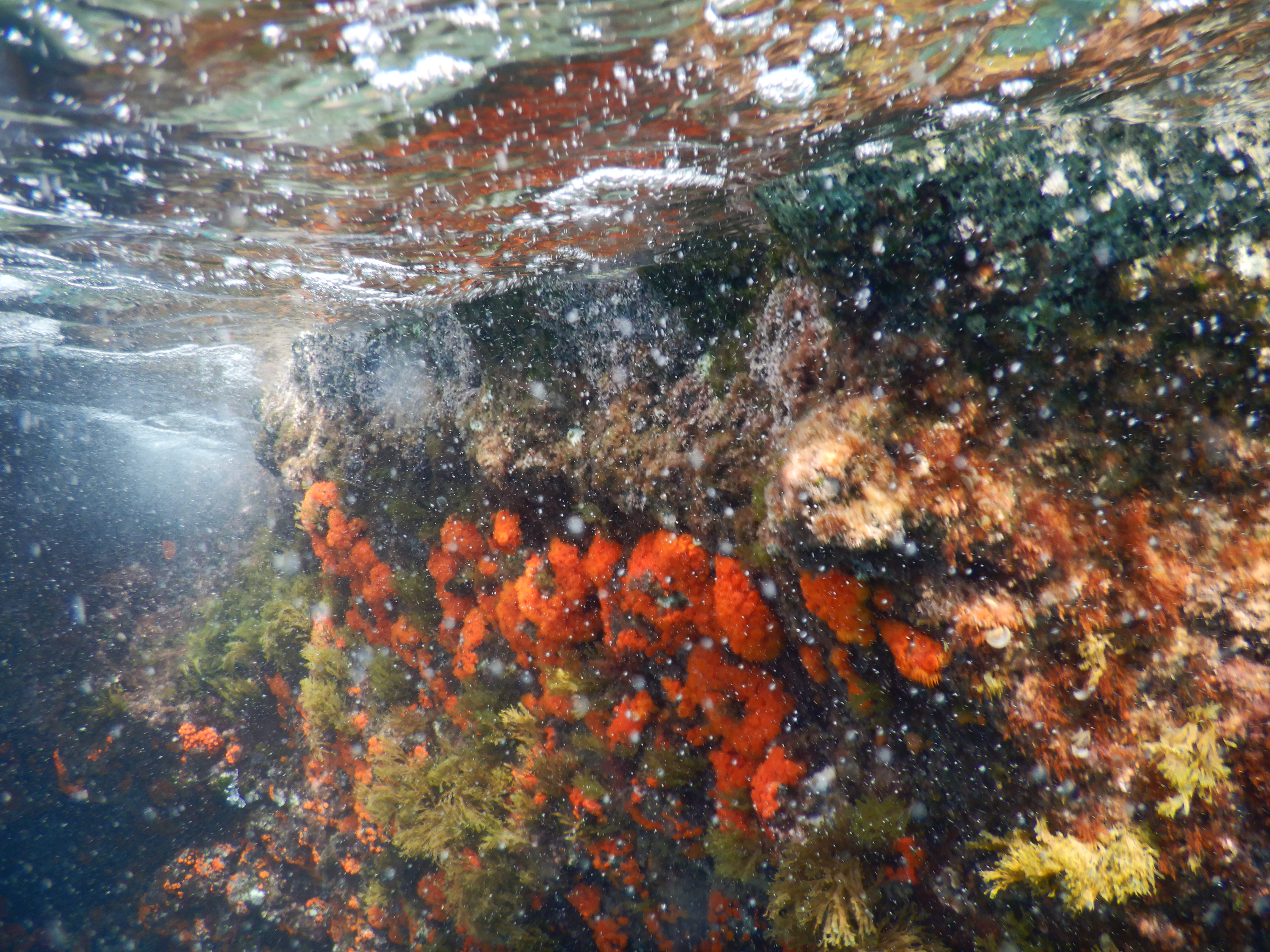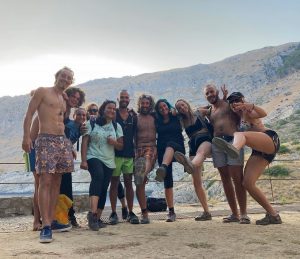Updated on June 4, 2019
Exploring Ieranto Bay
On the 14th of May we went to explore our work place for this summer, and we were accompanied by one of the volunteers of 2018, Dani, the first one to arrive to the meeting for all the members of the project, which was last week (21-29 of may).
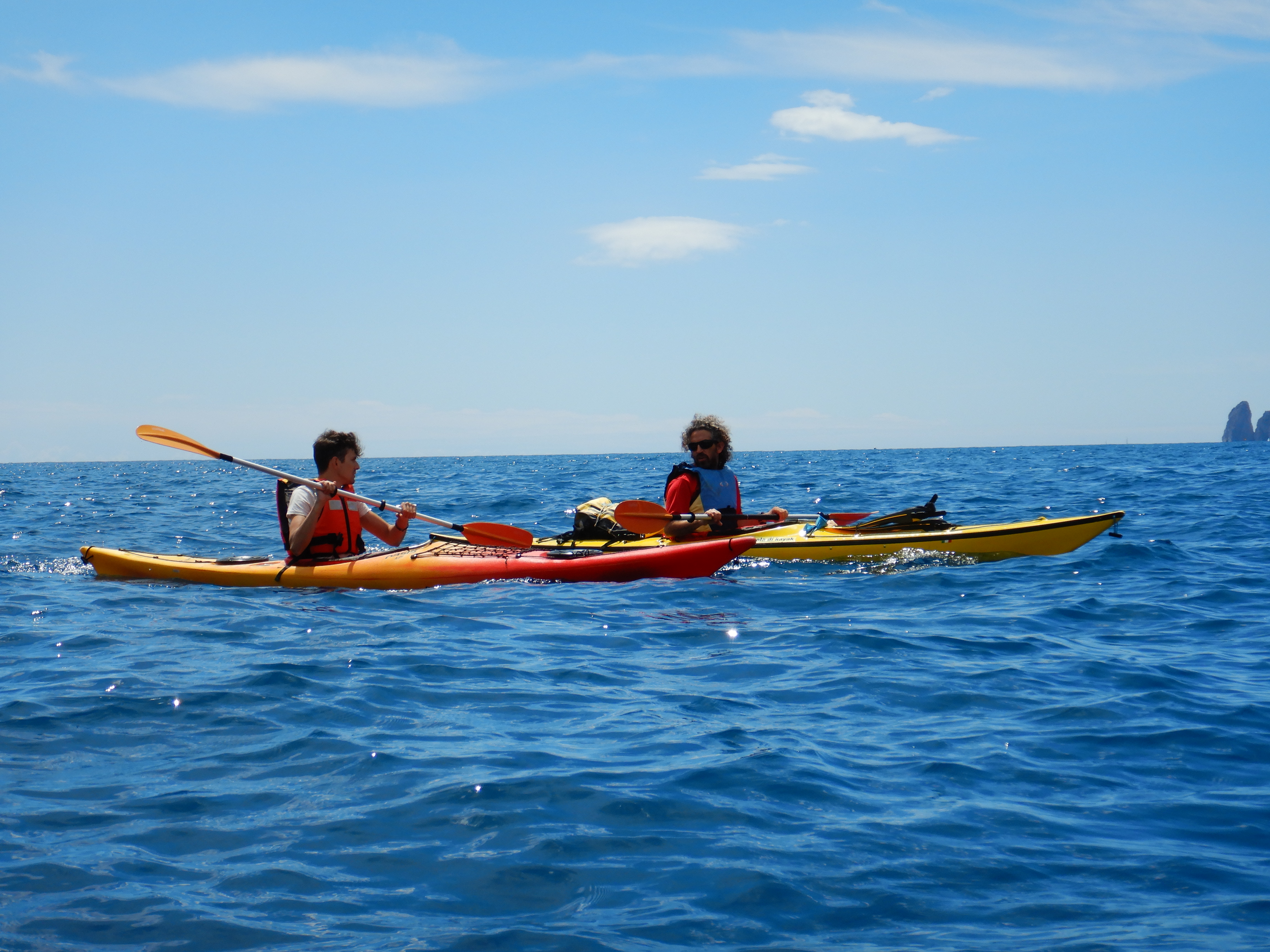
We started this adventure from Nerano with Kayak. In this trip our guide Mimi presented some of the secrets that are hidden in this bay. In the rocks surrounding the bay we could see many layers, a yellow layer (formed from barnacles that have died, because they have been outside of the water for too long), another layer – black (made by microorganisms) and a long brown layer (Biogenic rock, built over 150 million years by marine organisms, mainly bivalve mollusks currently are extinct, called Rudiste). After we also saw some white structures that are signs of a water rich in calcium carbonate.
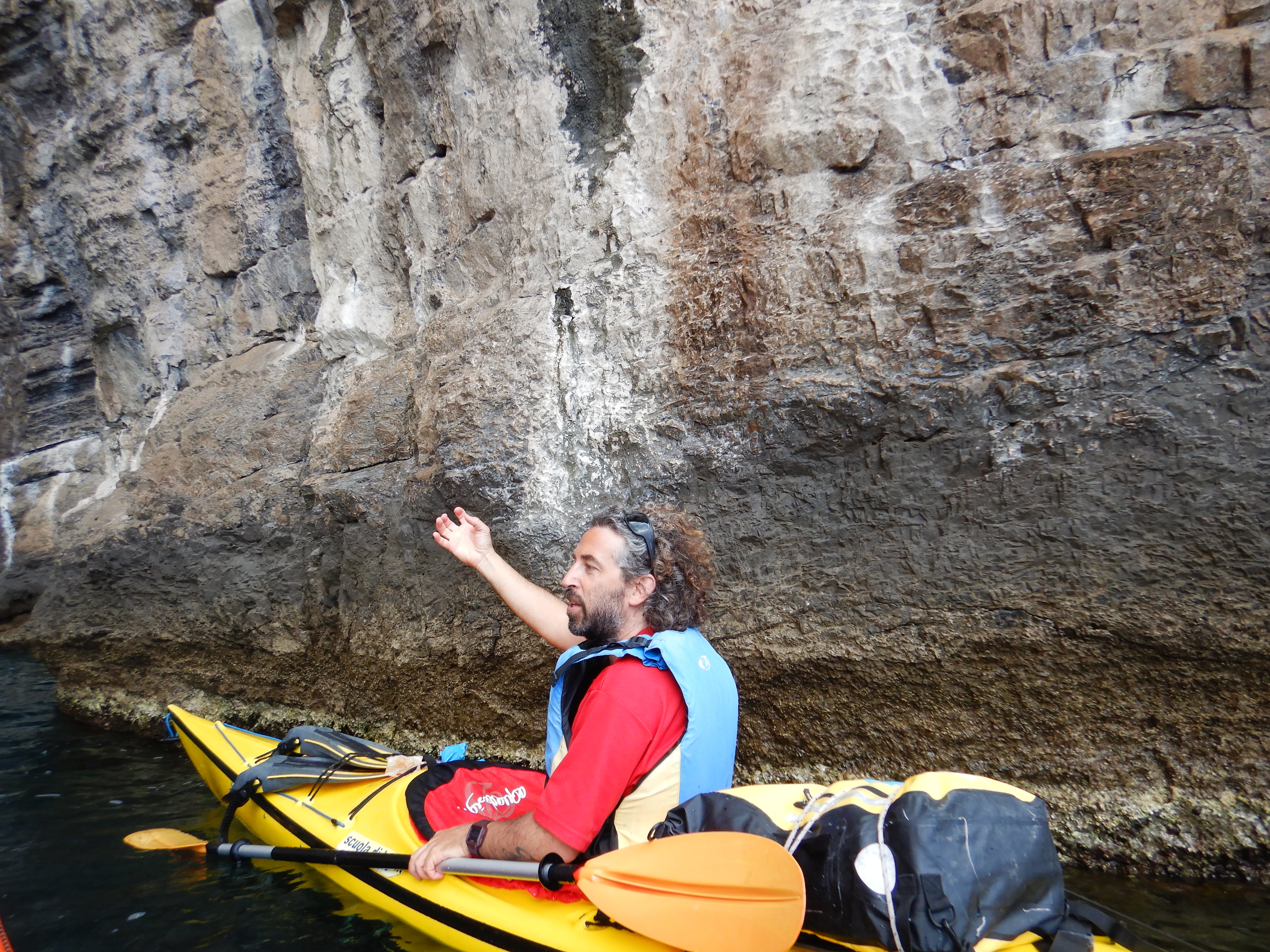
This bay hides a series of magnificent caves, which continue underwater, but this time we explored only the superficial part. There we can do a dive in the crystal blue water that looks like from a fairy tale! These places were very important for fishermen and all of them, or almost all, are called in female body parts or have a religious name, such as the Cave of Presepe (Nativity), the cave of Capitello and the cave of Zizzinara (“tits” in the air).
In addition to these important caves for fishermen, on the beach we saw another, Cave of the “Gabbiano Moribondo” (dying seagull). This part of the Marine Park is an important place for nesting of the seagulls and, when the chicks begin to fly, sometimes the attempt does not go so well and they end up injured. Afterwards, they go to this cave to recover, but in the end they die due to lack of food.
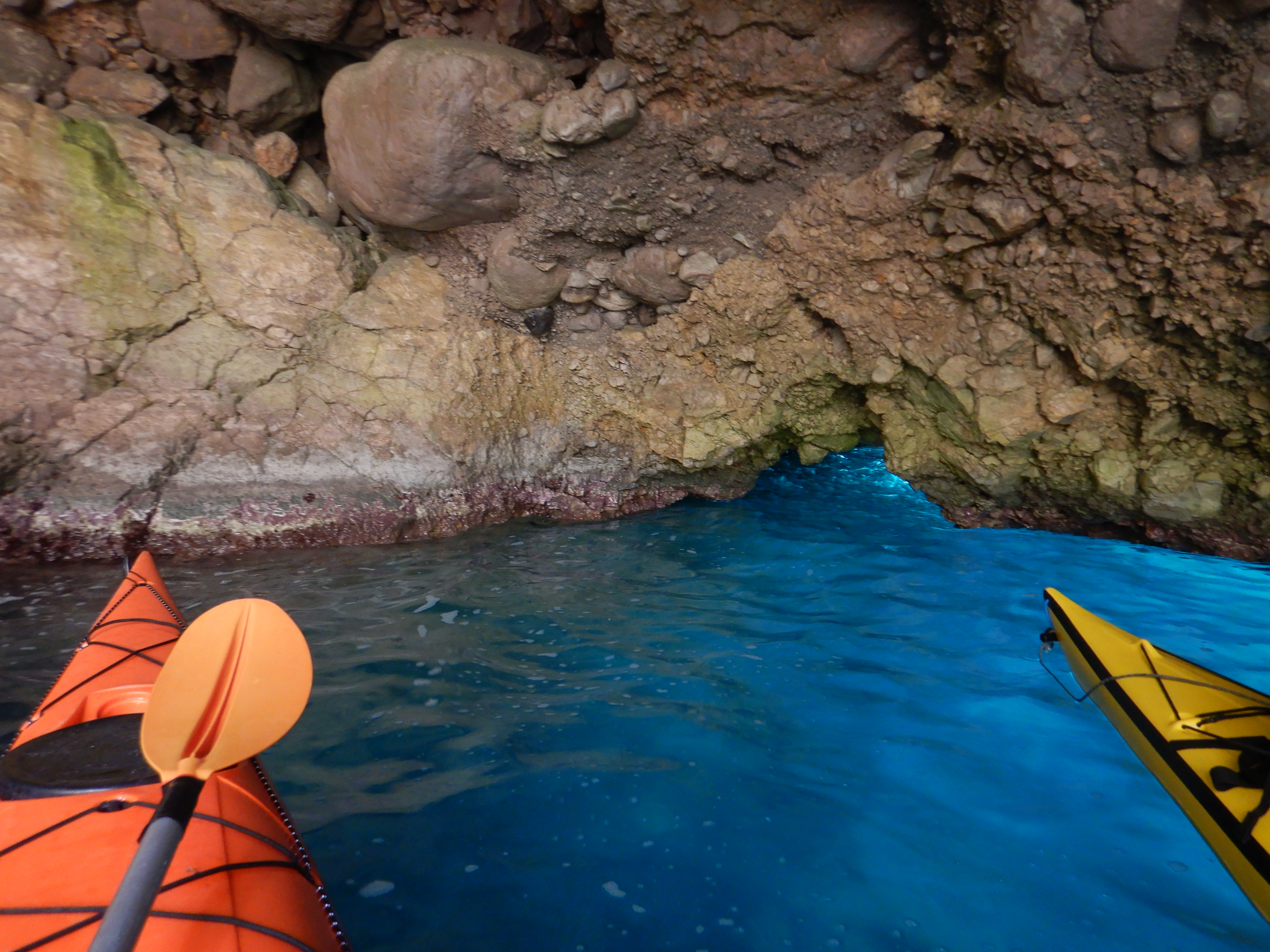
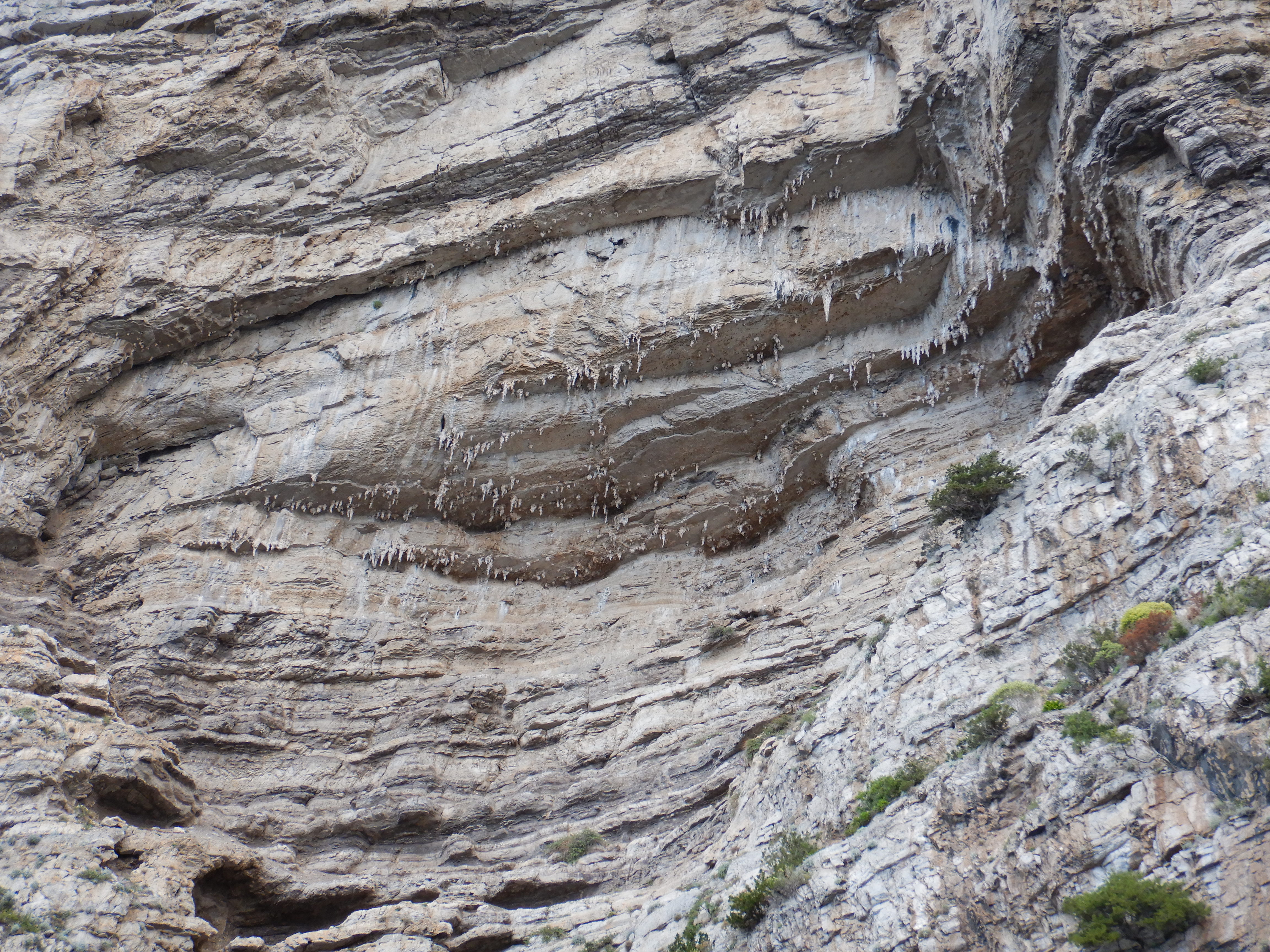
During our trip we also saw some more recent rocks, formed around 130,000 years ago, by ancient coral builders, who with environmental conditions of that period (on average higher temperatures) were able to form real coral reefs.
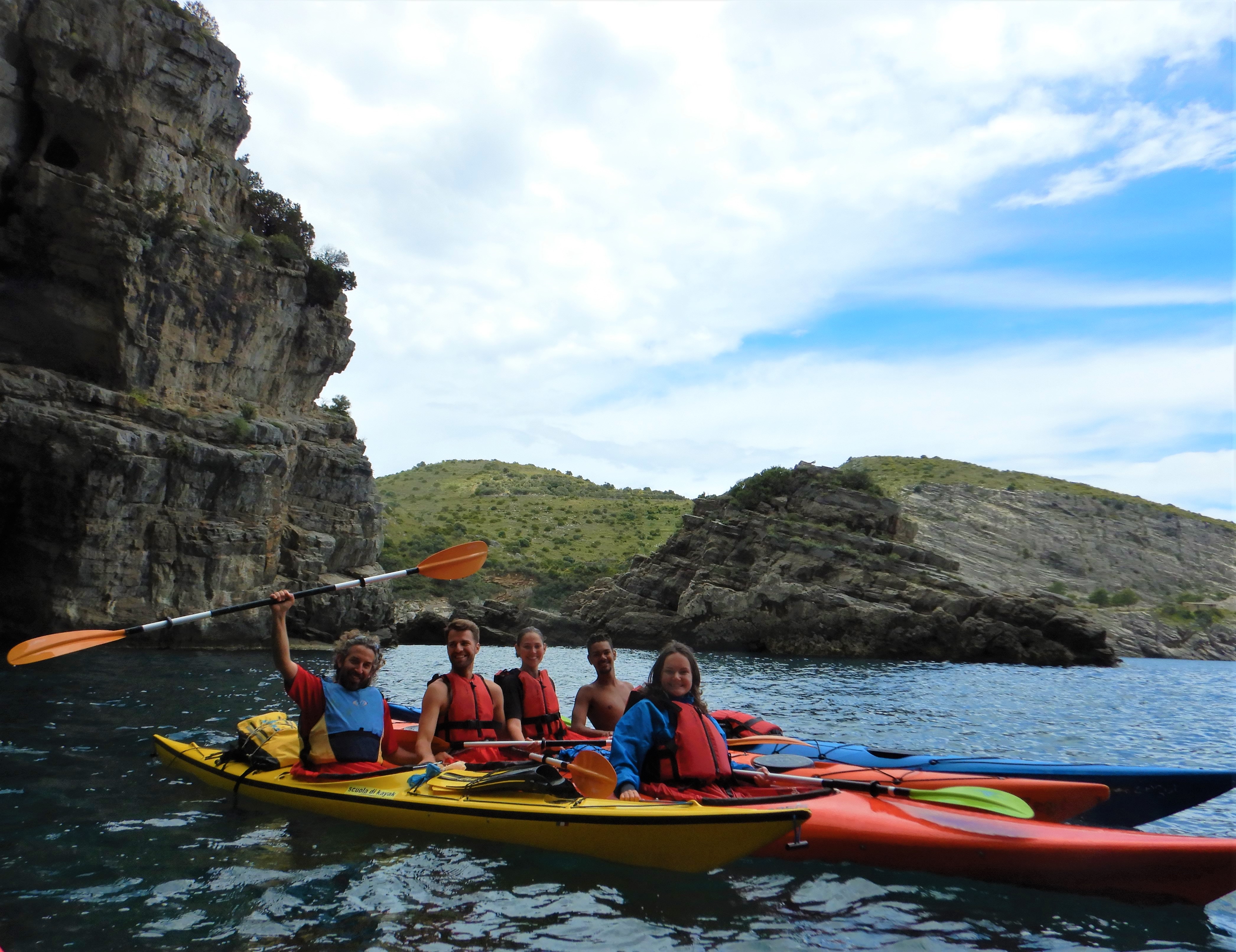
At the end of this windy journey, we arrived with the kayaks to the small bay of Ieranto, where we jumped into the water and started exploring the seabed!
In this new environment, although visibility was not very good, we found fish (White seabeam, Ornate wrasse, European bass, Damsel fish, Peacock wrasse, Painted comber), Algae (Padina, Coralline algae), Madrepore (Orange and pillow), Spirographs, Posidonia Oceanica grasslands (the most protected plant in our waters), a shell of Pinna Nobilis already dead (a bivalve that is facing a mass mortality in the Mediterranean), and more.

Spirograph 
Orange madrepore 
White seabeam

Peacock wrasse in rock enviroment 
Painted comber in Posidonia
At the end of a beautiful day, after 7 hours of exploring the marine environment, we returned to Nerano and found a tragedy! A young dolphin (Stenella striata) and a young turtle (Caretta caretta) were dead on the beach (the turtle was found floating in the morning between Capri and Punta Campanella). We do not know the cause of death, but this situation reminds us that we must protect the beauty that nature offers us!
See you in our next articles!
